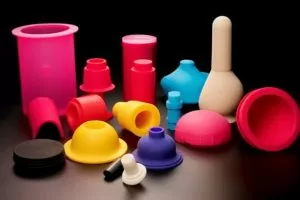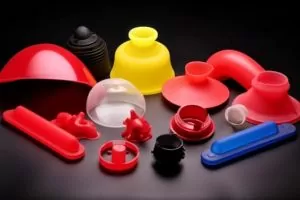Introduction:
Silicone rubber compression molding is a widely used manufacturing process that involves shaping and curing liquid silicone rubber in a mold cavity. This versatile method is known for its ability to produce durable and heat-resistant products. However, when it comes to high-volume production, certain challenges can arise that require careful consideration and strategic solutions.
High-volume production brings forth unique challenges in silicone rubber compression molding. The scale and speed of production can impact factors such as mold filling consistency, cycle time efficiency, and the occurrence of defects like flash. These challenges can hinder productivity, affect product quality, and increase manufacturing costs if not properly addressed.
Addressing these challenges is of utmost importance for successful manufacturing. By understanding and implementing effective strategies, manufacturers can optimize the compression molding process, minimize production issues, and achieve consistent quality in high-volume production. This ensures that products meet market demands, adhere to stringent specifications, and provide reliable performance.
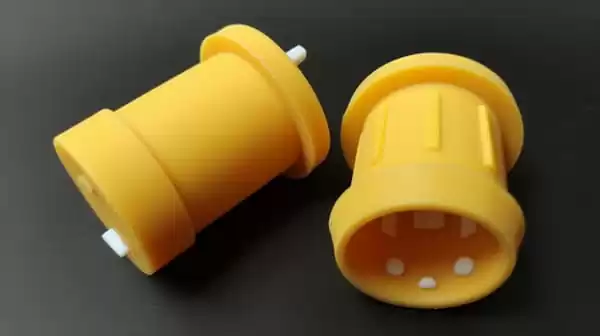
In the following sections, we will delve deeper into the specific challenges faced in high-volume silicone rubber compression molding and explore valuable insights on how to overcome them effectively. By addressing these challenges head-on, manufacturers can unlock the full potential of high-volume production and deliver exceptional silicone rubber products to various industries.
Problems with Compression Molding:
Compression molding, while a widely used manufacturing process, is not without its challenges. Manufacturers often encounter several common problems that can impact production efficiency and product quality. Here are some key issues associated with compression molding:
1.Inconsistent Mold Filling:
Achieving consistent mold filling is essential for obtaining uniformly molded products. In high-volume production, variations in material flow and distribution can occur, resulting in inconsistent filling of the mold cavities. This can lead to variations in part dimensions, surface defects, and compromised product quality.
2.Longer Cycle Times:
Compared to other molding techniques such as the injection molding process, compression molding generally has longer cycle times. The process involves the compression and curing of the silicone rubber within the mold, which can take more time. In high-volume production, longer cycle times can limit the overall output and slow down the manufacturing process.
3.Flash Formation:
Flash refers to excess material that escapes the mold cavity during compression molding. It occurs due to factors like improper mold design, excessive material quantity, or insufficient clamping force. Flash formation not only wastes material but also requires additional post-processing to remove or trim the excess material. This results in increased production costs and potential quality issues.
These problems can significantly impact production efficiency and product quality in high-volume compression molding. Inconsistent mold filling can result in parts with varying dimensions and surface defects, leading to rejected products and increased waste. Longer cycle times reduce the overall production output, affecting the ability to meet market demands. Flash formation not only increases material waste but also requires additional time and resources for post-processing, affecting the overall productivity and cost-effectiveness of the manufacturing process.

Addressing these problems is crucial to ensure efficient and high-quality production. In the following sections, we will explore effective strategies to overcome these challenges in high-volume silicone rubber compression and injection molding applications. By implementing these strategies, manufacturers can optimize the process, enhance productivity, and deliver superior products to meet market demands.
Major Disadvantage of Compression Molding:
The major disadvantage of compression molding, especially in high-volume production scenarios, is its slower production speed compared to other molding techniques. Unlike faster processes like injection molding, compression molding involves additional steps such as material preparation, manual or automated loading of the mold, and the compression and curing of the silicone rubber. These steps contribute to longer cycle times, which can limit the overall production output and impact the efficiency of high-volume manufacturing.
The implications of slower production speed in high-volume compression molding are significant. Firstly, it can hinder the ability to meet tight production deadlines and keep up with market demands. The longer cycle times associated with compression molding may not align with the desired production rates needed to fulfill large orders within a short timeframe. This can lead to delays in product delivery and potentially affect customer satisfaction.
Moreover, slower production speed can have financial implications. High-volume production often aims to achieve economies of scale, where higher production quantities help lower per-unit costs. However, compression molding’s slower speed can reduce the overall output, resulting in higher production costs per unit. This can impact profitability and competitiveness in the market.
Additionally, the slower production speed can affect the ability to quickly adapt to market changes or introduce new product designs. In fast-paced industries, being able to respond swiftly to market demands or design modifications is crucial. The time-consuming nature of compression molding can restrict agility and flexibility in manufacturing.
Despite this disadvantage, compression molding offers advantages in terms of versatility, material options, and the ability to handle complex part geometries. It is often preferred for specific applications that require unique properties or intricate designs. By implementing strategies to optimize the process and minimize cycle times, manufacturers can mitigate the impact of slower production speed and maximize the benefits of compression molding in high-volume production scenarios.
Factors Affecting Compression Molding Process:
Several key factors influence the compression molding process, playing a critical role in mold filling, compression, demolding, and overall product quality. Understanding and effectively managing these factors is essential for achieving consistent and high-quality results. Let’s explore the key factors:
1.Mold Design:
Mold design plays a vital role in compression molding. Factors such as mold cavities, runner systems, and parting lines impact material flow, mold filling, and part compression. Well-designed molds facilitate uniform material distribution, ensuring consistent part dimensions and reducing the occurrence of defects.
2.Mold Temperature:
Controlling mold temperature is crucial in compression molding. Mold temperature affects material flow, the vulcanization process, and part properties. Proper mold temperature management ensures optimal material flow into the mold cavities, promotes uniform curing, and enhances the mechanical properties of the final product.
3.Clamping Force:
Appropriate clamping force is essential for achieving proper compression and part consolidation. Insufficient clamping force can result in incomplete filling and poor part quality, while excessive force can cause flash formation. Careful control of clamping force ensures uniform compression across the mold cavities, leading to consistent part dimensions and surface finish.
4.Material Properties:
The properties of the silicone rubber material used in compression molding greatly influence the process and product quality. Viscosity, cure time, high consistency rubber, and mechanical properties of the material affect mold filling, flow, and final part performance. Selecting the right material with suitable properties for the application is crucial for achieving desired results.
5.Mold Release Agents:
Mold release agents are used to facilitate demolding of the cured parts from the mold. Proper application of mold release agents minimizes sticking and ensures smooth removal of the parts, reducing the risk of damage or defects during demolding.
6.Sprue Bushing Design:
The design of the sprue bushing, which connects the mold to the injection unit, can impact material flow and filling of the mold cavities. An efficient sprue bushing design helps to control flow rates, prevent air entrapment, and ensure uniform material distribution within the mold.
These factors collectively affect mold filling, compression, demolding, and overall product quality in compression molding. Optimal mold design, appropriate mold temperature control, precise clamping force management, suitable material selection, effective use of mold release agents, and thoughtful sprue bushing design contribute to consistent part dimensions, reduced defects, and improved final product quality.
By understanding and optimizing these factors, manufacturers can enhance process efficiency, achieve desired part properties, and ensure the successful production of high-quality silicone rubber products through compression molding.
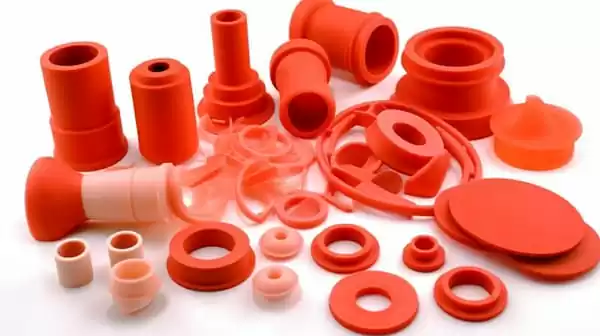
Defects of Rubber Molding:
Rubber molding, including rubber compression molding process, can be susceptible to various defects that can impact the functionality and appearance of the final product. Addressing and minimizing these defects is crucial for achieving high-quality results. Let’s explore some common defects associated with rubber molding:
1.Flash:
Flash refers to excess material that escapes the mold cavity during the molding process. It typically occurs at the parting lines or areas of the mold with gaps or misalignment. Flash can compromise the dimensional accuracy of the product and result in excess material or unwanted projections on the final part. It may require additional post-processing, such as trimming or secondary operations, to remove the flash, increasing production time and costs.
2.Air Entrapment:
Air entrapment occurs when air or gas becomes trapped within the molded part during the molding process. It can be caused by improper venting, inadequate mold design, or insufficient mold filling. Air entrapment can lead to incomplete filling, structural weaknesses, and the formation of voids within the part. These voids can affect the mechanical properties, such as strength or durability, of the final product, compromising its functionality.
3.Surface Imperfections:
Surface imperfections can manifest as scratches, blemishes, roughness, or other inconsistencies on the surface of the molded product. These imperfections can result from factors like mold surface defects, poor material flow, or inadequate mold temperature control. Surface imperfections not only affect the aesthetic appearance of the product but can also impact its functionality, particularly in applications where a smooth surface is critical, such as sealing or contact surfaces.
4.Dimensional Inconsistencies:
Dimensional inconsistencies refer to variations in size, shape, or thickness of the molded part. These variations can arise due to issues such as improper mold design, inadequate mold filling, or uneven compression. Dimensional inconsistencies can affect the fit, assembly, or performance of the final product, making it challenging to achieve precise tolerances or meet specific functional requirements.
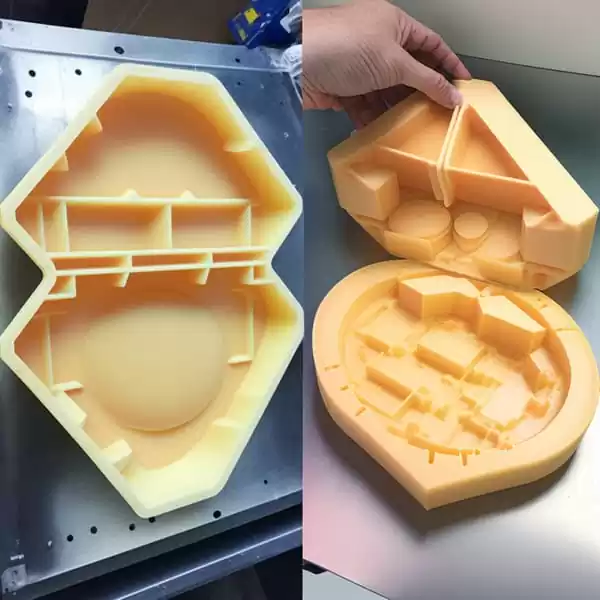
These defects can have significant implications for the functionality and appearance of the final product. Excess flash can lead to poor aesthetics, interfere with product functionality, or cause difficulties during assembly. Air entrapment and voids can weaken the structural integrity of the part, affecting its strength or durability. Surface imperfections not only compromise the visual appeal but can also impact functional characteristics such as friction, sealing capability, or contact properties. Dimensional inconsistencies can hinder proper fit, interfere with mating parts, or result in misalignments, affecting the overall performance or functionality of the product.
By implementing effective transfer molding process design, optimizing process parameters, and implementing stringent quality control measures, manufacturers can minimize these defects in rubber molding, ensuring high-quality products that meet the desired functional and aesthetic requirements.
Strategies to Overcome Challenges in High-Volume Silicone Rubber Compression Molding:
Overcoming the challenges of high-volume silicone rubber compression molding requires a systematic approach and implementation of effective strategies. Here are some key strategies to address these challenges:
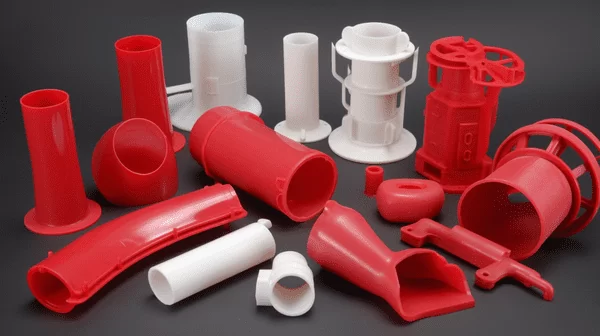
1.Consistent Mold Filling:
Optimize the mold design to ensure proper runner and gating system design for uniform material flow.
Utilize advanced process monitoring techniques such as real-time pressure and temperature sensing to identify variations and make necessary adjustments.
Conduct mold flow analysis to optimize the mold design and ensure consistent mold filling.
2.Efficient Cycle Times:
Utilize advanced mold design software and simulation tools to identify potential bottlenecks and optimize the mold design for faster cycle times.
Select high-performance silicone rubber compounds specifically formulated for fast curing to reduce overall cycle times.
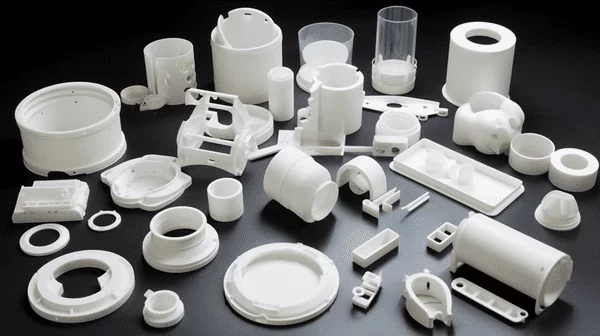
Optimize process parameters such as temperature, pressure, and time to minimize cure time and increase production efficiency.
3.Flash Control:
Focus on proper mold design and precise control of clamping force to minimize flash formation.
Implement mold temperature control to ensure proper material flow and prevent excess flash.
Implement strict quality control measures, including regular inspection and monitoring, to identify and address flash-related defects promptly.
4.Mold Maintenance:
Establish a preventive maintenance schedule for molds to ensure their longevity and consistent performance.
Clean molds regularly and use appropriate mold release agents to prevent sticking and improve demolding.
Implement proper mold storage techniques to prevent damage and ensure molds are ready for efficient production.
5.Material Quality:
Work closely with reputable material suppliers to ensure consistent and high-quality silicone rubber compounds.
Establish clear specifications and standards for material properties and conduct regular testing to verify compliance.

Conduct rigorous material testing to ensure the suitability of the rubber material for the intended application and minimize defects.
6.Mold Design Optimization:
Utilize advanced mold design software and simulation tools to optimize mold cavities, runner systems, and parting lines for efficient production and minimal waste.
Design molds with proper venting and gating systems to minimize air entrapment and ensure uniform material flow.
Consider factors like mold temperature, sprue bushing design, and mold release agents to promote proper material flow, demolding, and surface quality.
7.Process Monitoring and Inspection:
Implement real-time process monitoring techniques to identify variations and potential issues during production.
Regularly inspect and monitor the compression molding process to ensure adherence to quality standards and identify any deviations or defects.
Utilize statistical process control (SPC) methods to track and analyze process data, enabling proactive adjustments and continuous improvement.
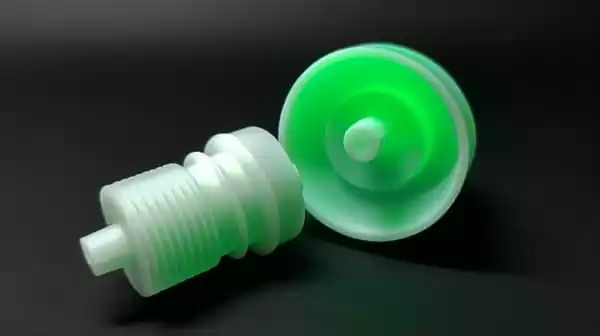
By implementing these strategies, manufacturers can overcome the challenges of high-volume silicone rubber compression molding. Consistent mold filling, efficient cycle times, flash control, mold maintenance, and material quality play vital roles in achieving successful production outcomes. Optimizing mold design, monitoring the process, and working with reputable material suppliers contribute to improved productivity, enhanced product quality, and cost-effective manufacturing.
Conclusion:
In conclusion, high-volume silicone rubber compression molding presents its own unique set of challenges that need to be addressed for successful manufacturing. Throughout this article, we have explored these challenges and provided valuable insights on how to overcome them effectively.
Consistent mold filling, efficient cycle times, flash control, mold maintenance, and material quality have been highlighted as key areas requiring attention. By carefully planning and optimizing these aspects, manufacturers can significantly improve productivity and enhance the quality of the final products.
Addressing the challenges of high-volume silicone rubber compression molding requires a systematic approach and the implementation of effective strategies. This includes optimizing liquid injection molding by design, utilizing advanced process monitoring techniques, conducting regular inspections, and working with reputable material suppliers.
By overcoming these challenges, manufacturers can achieve improved productivity, enhanced product quality, and meet market demands effectively. This can lead to increased customer satisfaction, higher profitability, and a competitive edge in the industry.
In conclusion, careful planning, optimization, and implementation of these strategies are crucial for manufacturers to succeed in high-volume silicone rubber compression molding. By continuously improving and refining their processes, manufacturers can unlock the full potential of this manufacturing method and deliver exceptional silicone rubber products to meet the diverse needs of the market.

